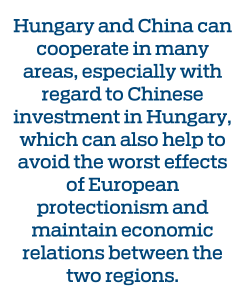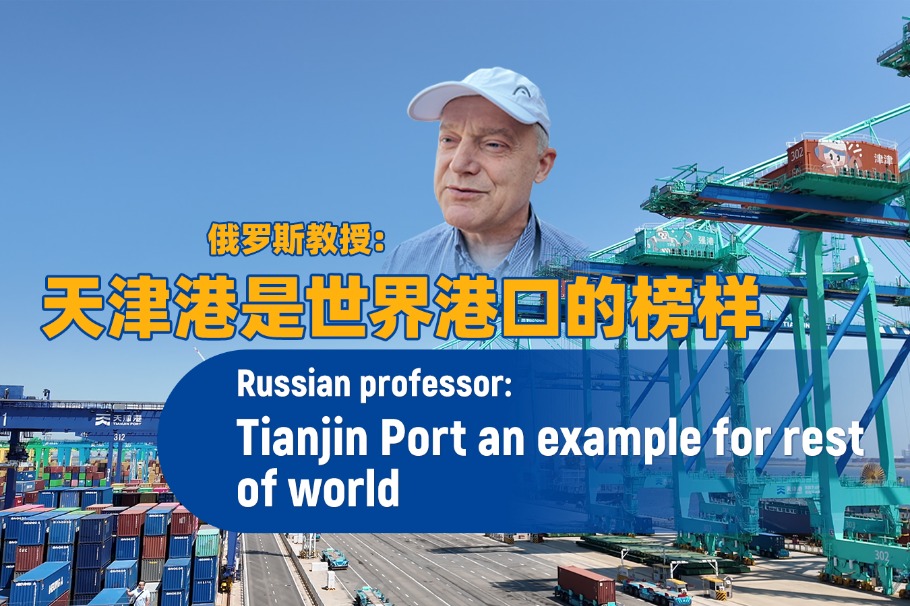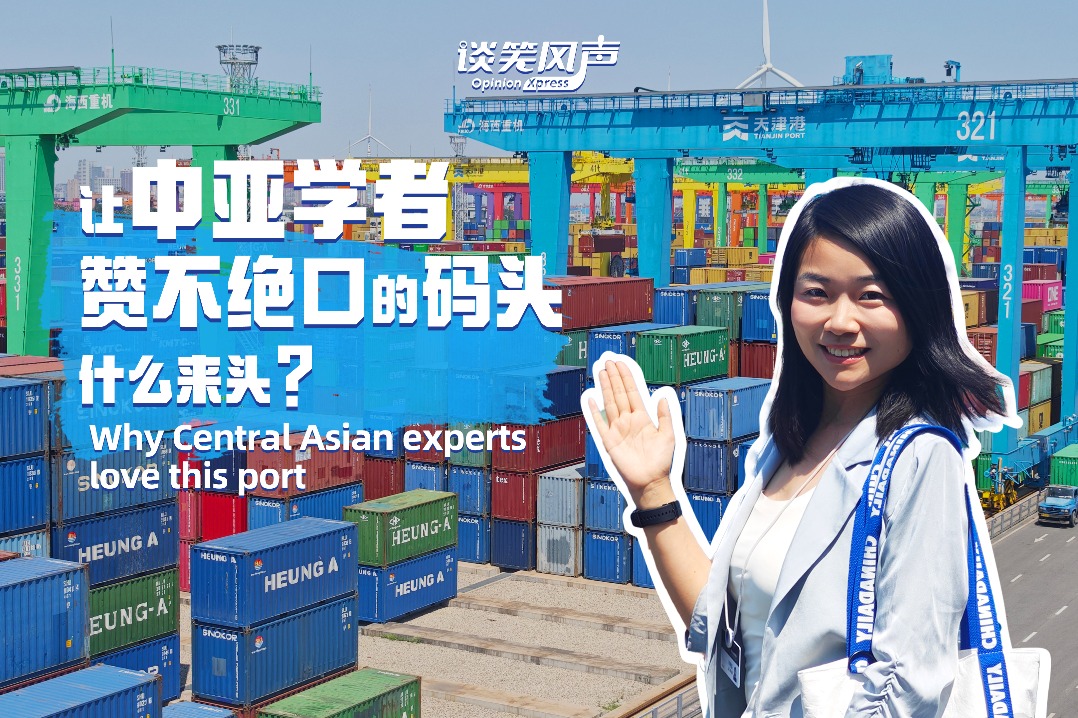Opening to the East helps
Hungary and China can cooperate in many areas, especially with regard to Chinese investment, which can help avoid the worst effects of European protectionism


On the 75th anniversary of the establishment of diplomatic ties between China and Hungary, China-Hungarian economic relations stand at a critical point. Bilateral relations have flourished for two reasons. First, there are clear, tangible benefits for both countries in terms of economic cooperation, so that it now appears to be sustainable; this can be seen in the alignment of the globalization policies adopted by both countries. Second, there are no ideological or political controversies between the two countries, both pursuing the policy of non-interference in the internal affairs of other countries.
From the Hungarian perspective, the continuation of globalization is of strategic interest to Hungary. China seems to be the only major economy where clear and decisive steps are being taken by the political leadership to preserve the achievements of economic globalization. China's strategy to promote globalization — the Belt and Road Initiative and other Chinese initiatives — is a big change. What is new about these initiatives is that both reflect the changing world order and the slow shift in the balance of economic power. Whereas a few decades ago, 70 to 80 percent of global investment came from the West and the rest by the East, the situation has now reversed and the majority of global investment comes from the East. Hungary's policy of "opening to the East" is basically an adaptation to this new situation.
The Hungarian government's motivation to create incentives to lure investment from the East, and from China in particular, is thus understandable. They present immense economic opportunities for cooperation. Take the BRI launched in 2013 for example, which essentially coincided with the Hungarian government's policy of "opening to the East" adopted a year earlier. While the Hungarian policy is aimed at expanding trade, investment relations and technology transfer with Asia, the BRI is a broader initiative aimed at further advancing the globalization process and diversifying China's economic relations with the world.
However, Hungary's policy is being challenged by political forces, especially in the West, who are reacting to this new reality by trying to divide the global economy into several spheres of political and economic influence. This is often referred to as decoupling or de-risking. European countries and the European Union have recently accused China of having industrial overcapacity and dumping its State-subsidized products on European markets, causing difficulties for European economies. The problem of overcapacity became an accepted, if unproven, fact due to the West's unwillingness to cooperate with China.
The problem China is now facing is not due to weak competitiveness of the Chinese economy or any other long-term structural weakness, but due to alleged differences in economic development. The question of whether the accusation is justified or not has been pushed aside. Western politicians associate overcapacity with excessive State subsidies in China. It is therefore worth discussing whether the accusation is true.
We must add that it is easy to jump to conclusions, as different Chinese and Western economic governance styles explain the overcapacity on the Chinese side. At the same time, a different picture emerges when we look at the hard facts. The latest version of the so-called Global Trade Alert report contains an inventory of 18,137 corporate subsidies granted by China, the EU and the United States since November 2008.Based on the findings, the report concludes: "Since the European Union and the United States were together responsible for 12,629 entries in our inventory of corporate subsidies, claims that extensive resort to subsidies is found only in state-dominated economic development models should be discounted. Resort to extensive subsidization is also a common feature of policy in more market-based systems of economic governance." The fact that both the EU and the US frequently resort to the instrument of state subsidies does not surprise economists, but only the public and attention-seeking politicians.
Of course, it is important to see to what extent government subsidies can boost local industry, as Western analysts often put it. When it comes to the volume of subsidies, we can see that the EU has the most protectionist trade policy. We do not have specific figures for China, as China is included under the "rest of the G20"label, but it is quite clear that the EU applies the most subsidies in terms of value. In 2019, the total volume of subsidies in the EU amounted to $262 billion, while the same figure was $74 billion in the US and $142 billion in the rest of the G20. These figures clearly show that the EU has the most protectionist approach to trade, both in terms of volume and number of government subsidy measures.
As we have seen above, the problem is not due to bilateral relations, but due to the deteriorating geopolitical conditions. More and more investments are being diverted by inward-looking European moves, which serves neither the interests of European consumers — as competitive Chinese suppliers are replaced by less competitive suppliers and consumers have to pay more — nor the interests of European companies, which are protected behind high tariff walls but whose competitiveness is not improved thereby.
The calls from European companies not to introduce protective measures should serve as a wake-up call to European decision-makers. European manufacturers, including Volkswagen and Mercedes, have warned against the unintended side-effects of protectionism. The reason why these reactions are important in the context of Hungary-China economic cooperation, is that German carmakers are closely woven into the Chinese supply chains and heavily represented in the Hungarian economy, the sector together accounts for around 20 percent of the Hungarian GDP. Hungary and China can cooperate in many areas, especially with regard to Chinese investment in Hungary, which can also help to avoid the worst effects of European protectionism and maintain economic relations between the two regions.


The author is head of the International Relations School at Mathias Corvinus Collegium, Budapest, and correspondence researcher at the China-CEE Institute. The author contributed this article to China Watch, a think tank powered by China Daily.
Contact the editor at editor@chinawatch.cn.

































